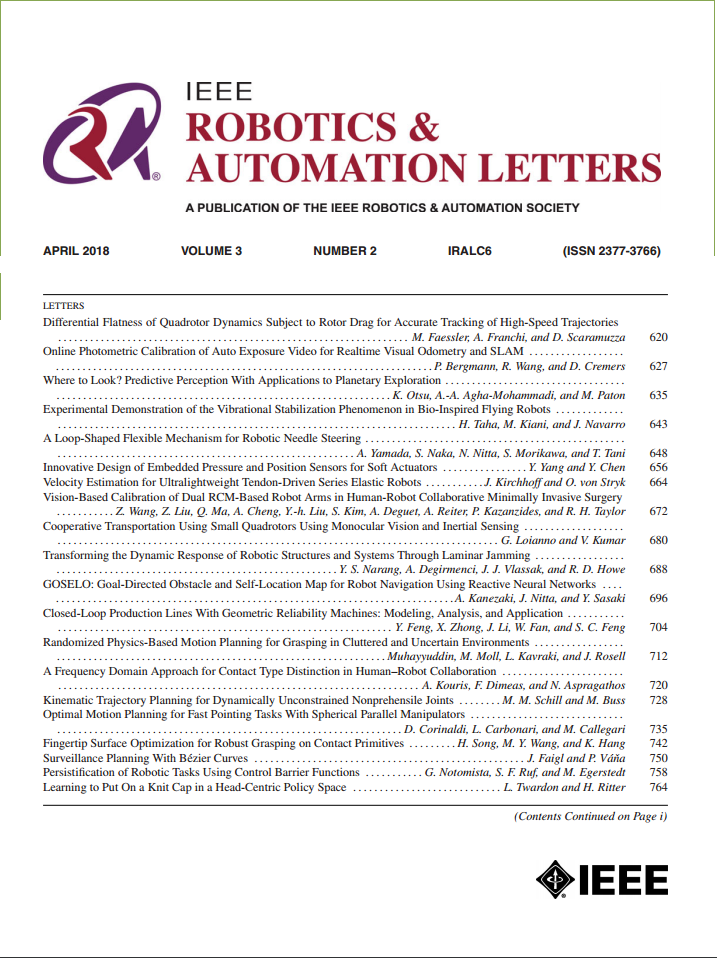基于约束变导纳控制的双型接近传感器安全临界反应运动
IF 5.3
2区 计算机科学
Q2 ROBOTICS
引用次数: 0
摘要
我们提出了一种方法,提高了机器人的安全性和响应性,采用约束变导纳控制(VAC)与接近感知相结合。最近的研究表明,配备接近传感器的机械手可以有效地实时避开附近的障碍物。然而,不可避免的碰撞仍然是人机交互(HRI)中的一个关键挑战。传统的反应运动算法主要关注避障问题,但缺乏对碰撞的有效处理,效率低下。我们的方法将基于接近度的预接触检测和VAC与基于qp的运动约束相结合,在保持运动稳定和受控的同时,主动调整阻抗参数。通过动态调节刚度和阻尼来响应传感器反馈,系统提高了避障性能和平滑的接触处理。此外,一个保持被动的能量罐机制减轻了由参数变化引起的不稳定性,确保了鲁棒性和自适应行为。此外,涉及HRI$^{1}$的实验表明,该方法既能保证安全回避,又能保证接触处理的顺利进行。这些结果表明,所提出的方法非常适用于协作和工业机器人环境中的安全关键任务。本文章由计算机程序翻译,如有差异,请以英文原文为准。
Safety-Critical Reactive Motion Using Constrained Variable Admittance Control With Dual-Type Proximity Sensors
We present a method that enhances the safety and responsiveness of robotic manipulators by employing constrained Variable Admittance Control (VAC) in conjunction with proximity perception. Recent studies have shown that manipulators equipped with proximity sensors can effectively avoid nearby obstacles in real-time. Nevertheless, unavoidable collisions remain a critical challenge in human-robot interaction (HRI). As a safety fallback, conventional reactive motion algorithms focus on obstacle avoidance but often suffer from inefficiency and disregard collision handling. Our approach integrates proximity-based pre-contact detection and VAC with QP-based motion constraints to proactively adjust impedance parameters while maintaining stable and controlled motion. By dynamically modulating stiffness and damping in response to sensor feedback, the system improves both obstacle avoidance performance and smooth contact handling. Additionally, a passivity-preserving energy tank mechanism mitigates instability arising from parameter variations, ensuring robust and adaptive behavior. Furthermore, experiments involving HRI$^{1}$
求助全文
通过发布文献求助,成功后即可免费获取论文全文。
去求助
来源期刊

IEEE Robotics and Automation Letters
Computer Science-Computer Science Applications
CiteScore
9.60
自引率
15.40%
发文量
1428
期刊介绍:
The scope of this journal is to publish peer-reviewed articles that provide a timely and concise account of innovative research ideas and application results, reporting significant theoretical findings and application case studies in areas of robotics and automation.
 求助内容:
求助内容: 应助结果提醒方式:
应助结果提醒方式:


